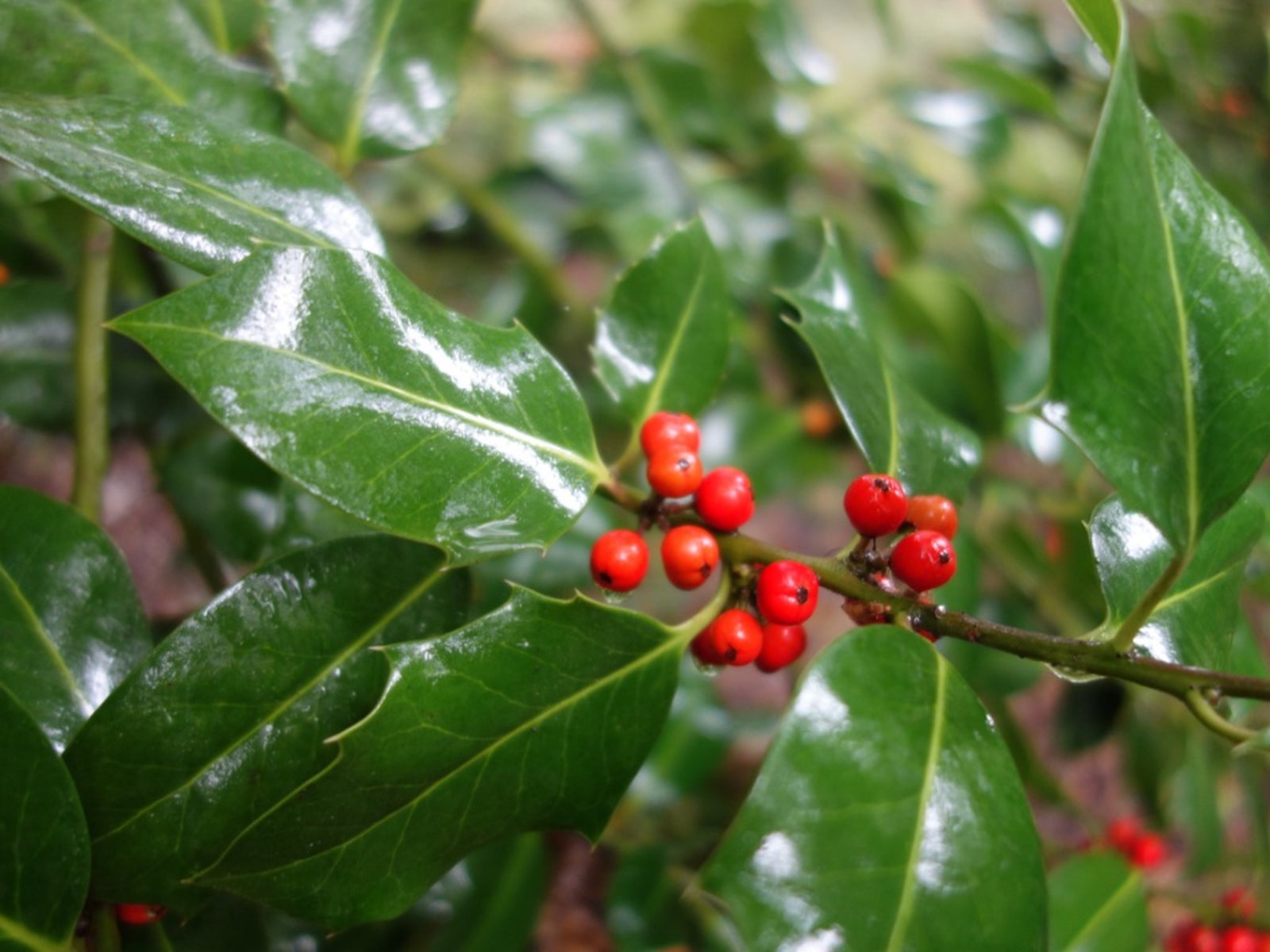How To Tell The Difference Between A Male And Female Holly Bush


Numerous shrubs produce berries, many of which using both male and female flowers on the same plant. However, some shrubs-- like holly-- are dioecious, meaning they require separate male and female plants in order for pollination to occur. Of course, in their native environments, this doesn't pose a problem. Nature simply takes care of itself.
In the home landscape, however, knowing how to tell the difference between a male and female holly bush is important. If you don't have at least one male within close proximity of a female, pollination will not occur. As a result, there will be no berries on holly. It takes just one male to pollinate several female plants.
Holly Plant Male and Female Differences
Male and female holly flowers grow on different plants. Although some plants may be tagged with their particular sex, this is rarely the case. Therefore, it is oftentimes up to you to determine the difference. This is not an easy task. It is nearly impossible to distinguish the male and female holly bush prior to blooming. Generally, all females produce berries. Males do not.
If you find a plant with berries, it's usually safe to say that it is female. The best way to determine the sex of holly plants is by examining the flowers, which are located between the leaf and branch joint. Although the small clusters of creamy white flowers are similar in appearance, males have more prominent stamens than females.
Types of Holly Shrubs
There are many types of holly shrubs:
- English holly (Ilex aquifolium) is one of the most common with its familiar glossy, dark green spiky leaves and bright red berries used for Christmas displays.
- Chinese holly (I. cornuta) is one of the few types of holly shrubs that can actually produce berries without male pollination. These berries vary in color from red, dark orange to yellow.
- The Japanese holly (I. crenata) produces vibrant black colored berries. This is also true of the inkberry variety (I. glabra), which is very similar and just as striking.
- There are several varieties of Blue holly (I. x meserveae) available as well, which produce attractive bluish green foliage, purple stems, and red berries.
To ensure you have both male and females, stick with similar varieties of holly plant, male and female are not always labeled. Named cultivars, however, are usually found in both male and female varieties. For instance, 'Blue Prince' and 'Blue Princess,' 'China Boy' and 'China Girl,' or 'Blue Stallion' and 'Blue Maid.'
One word of caution, not all male/female names can be relied upon. Take, for example, the variegated Golden holly varieties 'Golden King' and 'Golden Queen.' The names are deceptive, as 'Golden King' is actually the female plant while 'Golden Queen' is the male.
Gardening tips, videos, info and more delivered right to your inbox!
Sign up for the Gardening Know How newsletter today and receive a free copy of our e-book "How to Grow Delicious Tomatoes".
Planting Holly Shrubs
When planting holly shrubs, place them in full sun or partial shade and well-drained soil. The best time for planting holly shrubs is fall, although spring is also suitable depending on your particular region. Warmer climates benefit from fall planting so their roots have plenty of time to take hold before the onset of hot, dry summers.
Hollies should be spaced 2 to 3 feet (61-91 cm.) apart, depending on the variety used and overall size. Most types of holly shrubs have shallow root systems so add mulch. Holly shrubs can also benefit from occasional pruning to enhance their appearance.

Nikki Tilley has been gardening for nearly three decades. The former Senior Editor and Archivist of Gardening Know How, Nikki has also authored six gardening books.
-
 Looking For Plants To Give You The Soft And Fuzzies? Try These 5 Fuzzy Leaf Plant Options
Looking For Plants To Give You The Soft And Fuzzies? Try These 5 Fuzzy Leaf Plant OptionsLovers of texture, drama, silver foliage and tactile plants will adore these special sensory garden additions. These fuzzy leaf plant options will leave you all aglow
By Susan Albert
-
 Get Ready For A Summer Of Hummers! Grow These Full Sun Hummingbird Plants and Flowers
Get Ready For A Summer Of Hummers! Grow These Full Sun Hummingbird Plants and FlowersIf you’re lucky enough to enjoy a sunny backyard, make sure you are maxing out on your pollinator opportunities and grow these full sun hummingbird plants and flowers
By Tonya Barnett